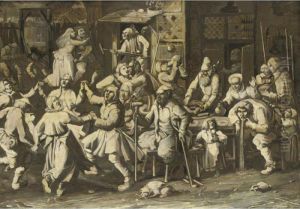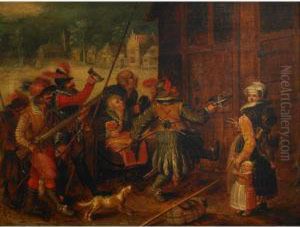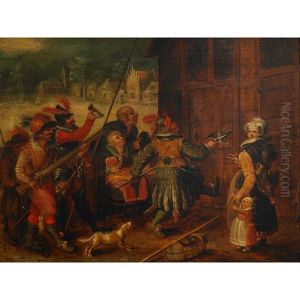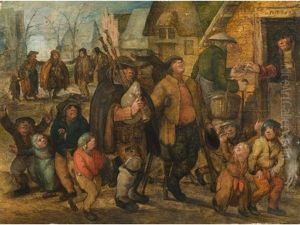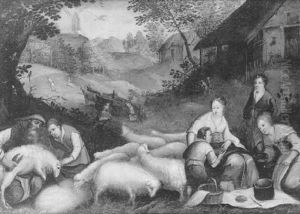Johannes Vinckeboons Paintings
Johannes Vingboons (also spelled Vinckeboons, Vinghboons, or Vinckboons) was a Dutch cartographer, engraver, and watercolorist in the 17th century. Born in Amsterdam around 1616/17, he was part of a family of artists; his father was David Vinckboons, a successful painter of Flemish origin who had settled in the Netherlands.
Johannes Vingboons is primarily known for his detailed maps and cityscapes. His works are significant contributions to the cartographic and artistic record of the Dutch Golden Age, a period when the Dutch Republic was a world leader in trade, science, military, and art. Vingboons' works provide a visual record of various parts of the world, reflecting the extensive reach of Dutch maritime trade during that time.
While he never traveled far himself, Vingboons relied on sketches and descriptions from sailors and other travelers to create his works. He was particularly known for his watercolors of cities and landscapes from the Americas, Africa, and Asia. These pieces were not only valuable for navigational purposes but also served as exotic illustrations for the Dutch elite who were eager to get a glimpse of the world beyond Europe.
Among his notable works are the watercolors he produced for the Dutch West India Company, which are considered some of the most accurate and detailed depictions of the Americas during the 17th century. His cartography contributed to the shaping of the Dutch colonial imagination and provided valuable information for the expansion of Dutch trade routes.
Johannes Vingboons died in Amsterdam in 1670. His legacy endures through his contributions to the fields of cartography and art. His works are preserved in various institutions around the world, including the National Library of the Netherlands, and they continue to be studied for their historical and artistic value.
